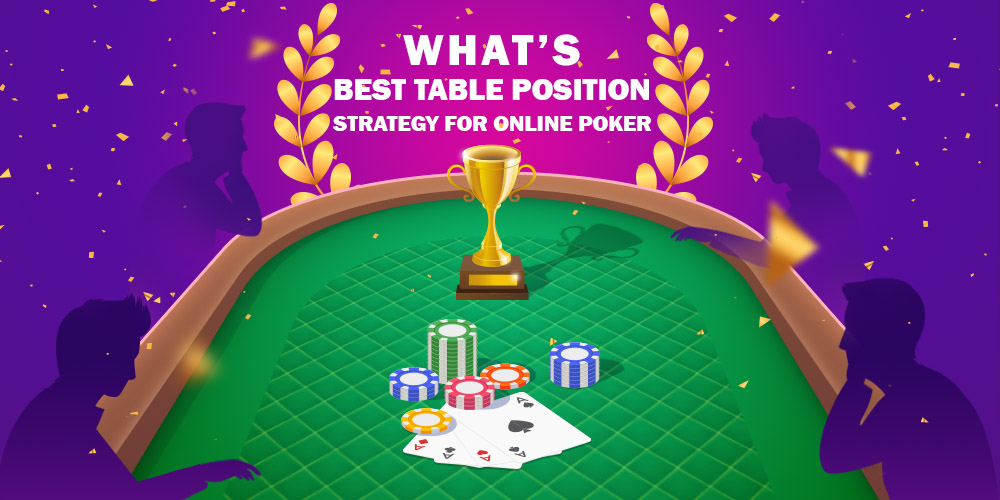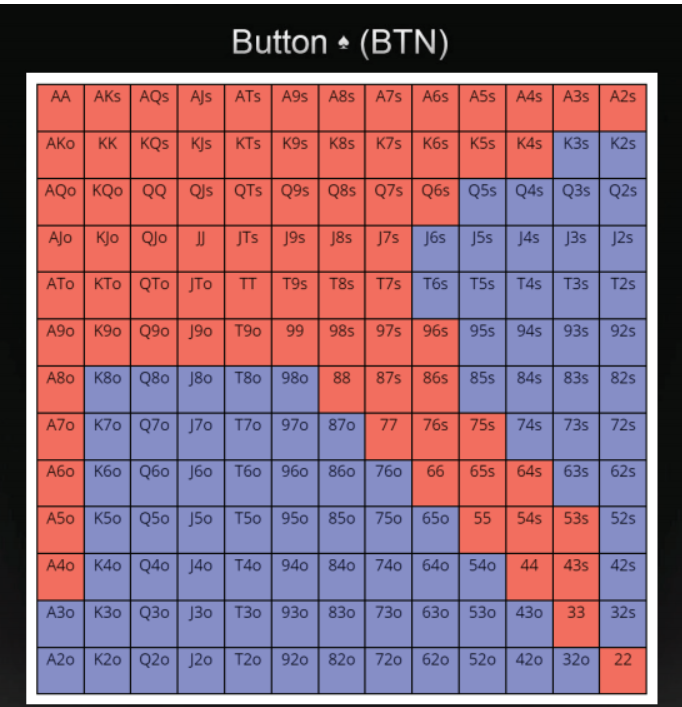
Position in poker is one of the first things you hear when you start learning the game. In the game of poker, positions matter a lot. The later, the better. It is a game of information. The more information you have, the better your decisions will be.
Poker positions are one of the facets of poker that most of the new players often neglect. They assume that all seats are created equal, and the game is solely based on the cards they possess. But, your position at the table is much more important than the cards you are dealt...seriously.
But what does a poker table position mean?
Position refers to the order or an arrangement in which players are allowed to take action. A player who acts first on every betting round is known as “out of position” whereas a player who acts last is called “in position”. Playing out of position is like walking through a dark cave without a torch. You never know what may be for you behind the next corner. On the other hand, when playing in position, everything is simple. You get to see your opponents actions and then play your hand accordingly. So, playing in position gives you full control over the game.
There are four different positions in poker:
1. The Blinds
2. Early position
3. Middle position
4. Late position
The Blinds
The first two poker positions are small blind (SB) and big blind (BB). The name of these two positions comes from the fact that the players have to place a forced bet before the cards are dealt. The first player sitting left of the dealer button is known as small blind (SB), and the player sitting left of the small blind is known as big blind (BB). The SB is the most unfavourable seat because you will always take action out of position with the least amount of information. They pay a bet which is half of the big blind. For instance, if the BB is ₹100, then the SB will be ₹50.
On the other hand, BB is the most unprofitable seat as you have to put a big blind in the pot without seeing your cards. The bet is double of the small blind. When playing from this position, make sure you just play the best cards and discard any weak hands.
Early position
Early position is the worst place to be at the poker table as you are the first player to take action. This means that before the flop, the player sitting to the immediate left of the big blind is considered to be in early position. This also refers to “under the gun” or UTG position. The reason why it is called under the gun is that the player is under pressure to make the first decision after seeing their hole cards.
This position is most difficult to play as you are not aware of your opponents tactics against their cards. With the disadvantages, there comes an advantage also. If you have a monster hand, you can bet high and confuse your opponents about their cards.
You may also read: Playable Hands Before the Flop in an Early Position
Middle position
The middle position is the one who sits to the left of the early position. You are neither at a bad spot or a great spot. In this position, your possible positional drawback is less than in the early position. When you are in the middle position, you get to see how the players in UTG have already played, but you don’t know how the players at the late position will play. You can begin playing a little loose, but you must proceed with caution, as there are few other opponents also left to act behind you.
Late position
The late position is the most powerful position on the entire poker table as you get valuable information about your opponents. This position has two different terms for the last two players: cut-off and the button. The player who is the second to last player to act is known as cut-off. The button is the one who is the last player to act. Since you are always the last player in each betting round, the advantage of late position is you can bet accordingly on the basis of the moves made by your opponents.
You have a chance to call, bet, raise, or fold without losing any money. This position gives you many bluffing chances where you have an opportunity to win a pot uncontested simply because you are in the most profitable position and can exploit your opponents weakness and cautiousness.
You may also read about the importance of poker positions
In a traditional 6 or 9-handed game, every position is given a particular game. For a 9 players, there will be positions such as Small blind (SB), Big blind (BB), Under the gun (UTG), UTG+1, UTG+2, Middle position 1 (MP1) or LoJack (LJ), Middle position 2 (MP2) or Hijack (HJ), Middle position 3 (MP3) or cut-off (CO), Button (BTN),
In a 6-max handed game, there will be (obviously) three fewer players than a 9 handed game. You don't have UTG+1, MP1, and Hijack. The positions in 6-max games are Small Blind (SB), Big Blind (BB), Under the gun (UTG), Middle position (MP1) or LoJack (LJ), Cutoff (CO), and Button (BTN).
In recent years, 6-Max poker has gained popularity. Full ring games, i.e. 9 or 10 players, were once the norm, and they still are if you play live poker, but 6-Max has taken over the online poker world.
Starting hand ranges in Texas Hold’em
There is a lot more to say about the position in general, but now you might have a decent idea of why they are so crucial. Below are the starting hand ranges that you should take into consideration from every position.
Starting hand ranges in Early position

Image source: Upswingpoker
This poker position hands matrix represents all the possible starting hands. As mentioned earlier, you should play very tight in this position. As there are players left to act behind you, there may be a possibility that they have a strong hand. So, you should be vigilant. In UTG, you should play with 77 and above, AT suited and above, etc. The red square depicts the hands you should play from UTG.
Starting hand ranges in the Middle position

Image source: Upswingpoker
The player in the middle position is also known as LoJack (LJ). As the LoJack is somewhat better than UTG, you can widen your range since it leaves only a few players to act after us. You can include more hands like 55 and above, all ace suites, AT off-suit and above, etc.
Starting hand ranges in Late position

Image source: Upswingpoker
If you are looking at this chart, you might be thinking and saying to yourself, “There is no way this is correct.” Is it worth raising with a garbage hand like Q6s? Well, everything depends on the poker positions. Though you will never even think of Q6s from UTG, but in button position, it becomes a playable hand. So, you have a much wider range at this stage than the middle and under the gun position. You can include hands like all aces, suited connectors, all ace suited, all king suited, etc.
How to use position strategy when playing online poker
Now that you know about the various positions that are used in the game of poker, how do you add this to the game? Well, below are some of the table position strategies that you must use when playing to maximize your profits.
Play tight from the blinds
How well you use your poker strategy when you play the game from blinds will greatly affect your overall win rate. Thus, the trick is to play tight from the blinds in order to minimize your loss rate as much as possible. If you are a beginner player, make post-flop play easier on yourself by starting with a tighter selection of hands from the blinds. As your post-flop game progresses, you will be able to widen your starting hand selection.
Since you are in a small blind position, you still have to worry about the big blind to act behind you. So, a common tactic is to primarily re-raise if you are going to enter the pot after one of your opponents has initially raised. But proceed with the game only if you have good hands; otherwise, wait for the next game.
Bluffing opportunities
Having a position on an opponent is so beneficial that it can often cover up if you have a mediocre hand. This means that even if you have a weak hand, but the chance to act last gives you a significant advantage where you can try representing that you have a premium hand. Following the best pro poker tips will lead to more opportunities to bluff when an out of position opponent shows weakness by checking to you.
Pot control
The last player to act post-flop helps you to decide how big or small you want the pot to be. If you want to play a small pot and your opponent checks, you can check behind. But if your opponent bets, then you can call and close the action. However, if you want to go for a big pot, you can bet or raise when the action is on you. In the case of out of position, you are never sure that if you check, but be sure that your opponent will check and let you see the next card for free. You cannot be certain if you bet and your opponent folds or calls (making them control the pot).
Once you have mastered the rules and hand rankings, the next step on your list should be to understand the poker table positions. As you know, that position has a major impact on the range of hands you want to play, so you will make a lot of mistakes without this knowledge. If you have just started to play poker and are not familiar with it, we advise you to practice first to get the hang of it. You can practice the online poker strategy based on your positioning and seating arrangements on Gamentio. Practice for unlimited hours with poker enthusiasts across the country and once you feel confident about your gameplay, then only head over to play for real money.